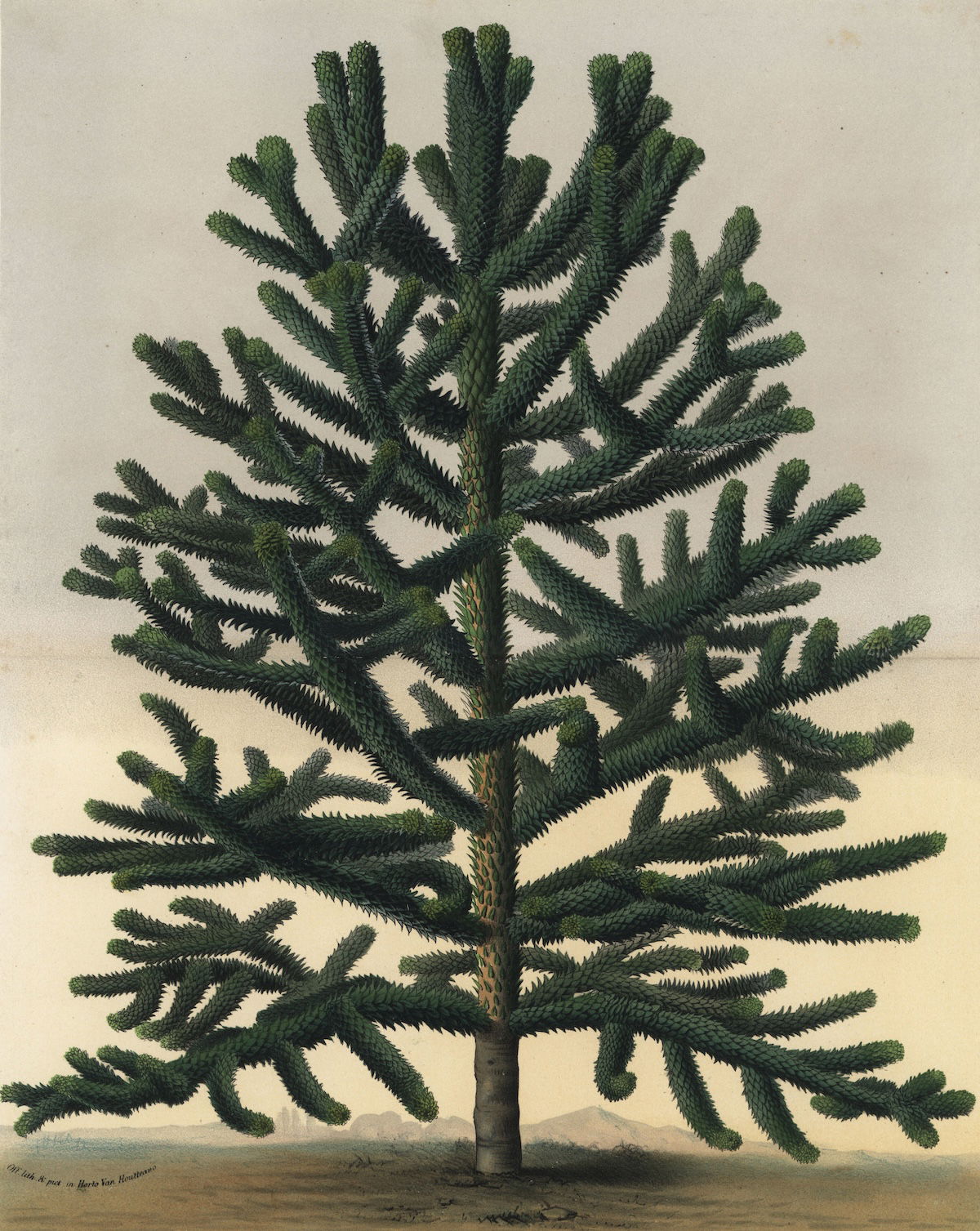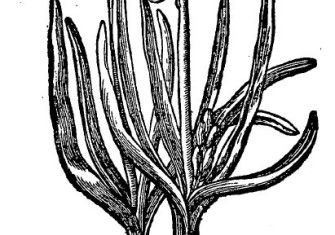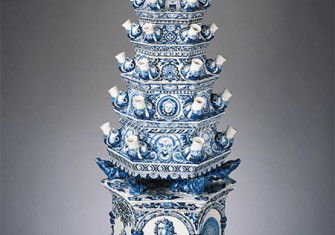‘The Tree Hunters’ by Thomas Pakenham review
In The Tree Hunters: How the Cult of the Arboretum Transformed Our Landscape, Thomas Pakenham reveals the discoveries of Britain’s buccaneering botanists.

We were overjoyed, this past summer, when our handkerchief tree, Davidia involucrata, flowered for the first time at the age of 17. Equally full of joy must have been the first European to have seen it, Père Armand David, who found it in full flower in the mountains of northwest China in 1869. The tree, as Thomas Pakenham describes it, was ‘draped with thousands of ghostly handkerchiefs’, cream-coloured flowers (properly bracts) which can now be seen in thousands of European gardens. Joyful indeed, and it is joy – in trees of all their variety – which suffuses this book. Pakenham loves his trees.
A thriving trade in plants between Britain and other European countries certainly existed in the late medieval period, but Pakenham reasonably begins his account with the Tradescants, father and son, in the early 17th century. The elder was responsible for importing and nurturing a number of European trees but it was John Tradescant the younger, in particular, who was the first tree hunter, as Pakenham calls his subjects, to visit North America. He returned from Virginia with, among others, the tulip tree. Many of the new trees were first planted in the garden of Henry Compton, bishop of London, at Fulham Palace.
But the great age of the tree hunters was the next two centuries. Between 1700 and the 1920s they ranged the world, from Alaska to Patagonia, from South Africa to China and Japan, seeking trees new to European markets. Several wrote accounts, on which Pakenham draws heavily, of their hair-raising adventures; a number lost their lives, from disease, accidents, or murderous attacks. John Bartram and Peter Collinson combined to supply hundreds of trees from the eastern seaboard of North America in the early 18th century. Joseph Banks ranged wider, circumnavigating the globe with Captain Cook and sending an emissary to try – largely unsuccessfully – to collect trees and seeds in China. In the 1820s David Douglas began his epic journeys through North America for the Horticultural Society of London; they ended only when he fell into a cattle pit and was killed by an infuriated bull. Joseph Hooker, in the 1840s, explored Sikkim and was taken hostage by hostile lamas in Tibet, while Robert Fortune explored temperate China. William Lobb, John Veitch, Augustine Henry, Ernest Wilson, and George Forrest followed. They, and the collectors and nurseries who paid for their travels, are commemorated in many plants – the Douglas fir, Trachycarpus fortunei (the Chusan palm), a silver fir Abies veitchii, the rhododendrons named after J.C. Williams, and, of course, Davidia.
To Pakenham, it is these heroic hunters who transformed our landscape. He is dismissive, even downright grumpy, about Lancelot ‘Capability’ Brown and the other gardeners of the landscape school who designed the parkland of so many of our great houses: ‘smooth formulas for the new “natural” landscape – clumps of beech and oak with a stream turned into a lake – [which] might sooth the senses but could not excite the eye.’ So much for the designer who has been described by other garden historians as England’s greatest contribution to European culture.
Pakenham has developed his own arboretum on his family’s estate in Ireland and his sympathies are with Humphry Repton and the Picturesque style – painting pictures with plants – as well as with John Claudius Loudon’s encyclopaedist approach – collecting single specimens of as many varieties of tree as could be persuaded to grow in the British climate. Other arboretums followed Loudon’s urgings and arranged the trees to display all their features and their place in the Linnaean or other systems of classification. Kew and Westonbirt are particularly glorious, but there are others.
However, a concentration on the adventures of plant hunters and the display of their discoveries in arboretums has disadvantages. Whether brave or foolhardy, they were but a small part of what would now be called a complex supply chain linking together plant nurseries and their customers across continents. At least by the end of the 17th century and probably earlier, this was capable of nurturing and selling millions of plants of many thousands of varieties. George London, who had worked with Bishop Compton, founded with his partner Henry Wise the Brompton Park nursery, which by 1715 took up at least 50 acres of Kensington and contained, it was said, ten million plants. Pakenham describes how Frederick, Prince of Wales – eldest son of George II – and his wife Augusta laid the foundations for what became Kew Gardens, but does not mention their earlier garden around Carlton House in central London. Covering nine acres, it contained 15,000 trees, including North American rarities, together with thousands of shrubs and bulbs. It was landscaped and planted in three years by two London nurseries, who also supplied an aviary, bath house, and water pumps, all for a cost in modern terms of at least £10,000,000.
Gardening was, therefore, a large and complicated industry of which plant-hunting was only a part. Moreover, many of the countries to which the hunters went had a long history – much longer than Britain’s – of the creation of beautiful gardens. The Hanging Gardens of Babylon, the rose gardens of the Persian empire, the complex designs of the gardens of India, China, and Japan; all are examples of skills and plants developed over millennia. The image of intrepid British plant-hunters ploughing through virgin forests to ‘discover’ new species is attractive but misleading. As Pakenham reveals, Robert Fortune – sent to China by the London Horticultural Society in the 1840s – found most of his ‘discoveries’ in the gardening shops of Shanghai and the other Chinese treaty ports.
The Tree Hunters is, like Pakenham’s earlier books, beautifully written and enjoyable to read. It radiates pleasure in its subject, which is really the trees themselves. They adorn the gardens of Britain and Ireland, as they do gardens throughout the world, and are well worth the attention which this book gives them.
-
The Tree Hunters: How the Cult of the Arboretum Transformed Our Landscape
Thomas Pakenham
Weidenfeld and Nicolson, 376pp, £30
Buy from bookshop.org (affiliate link)
Roderick Floud is the author of An Economic History of the English Garden (Allen Lane).






